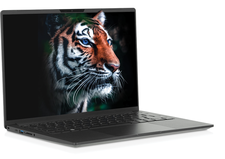A new slim-line laptop
The Next Generation

We test a new entrant in the world of slim and lightweight Linux-powered laptops.
Back in November 2020 [1], Linux Magazine tested the InfinityBook S 14 v5 from Tuxedo, a German laptop vendor that has been in the Linux business for more than 15 years. Despite a couple of minor gripes with the trackpad and power management, we were largely happy with the machine: It was light, slim, and had excellent battery life (14 hours on medium brightness, playing videos).
Now Tuxedo has a new laptop on offer, the InfinityBook Pro 14 Gen6 [2]. Tuxedo advertises the InfinityBook Pro as an "ultra portable business notebook," with particular marketing efforts focused on its display, magnesium-alloy chassis, and glass touchpad. The laptop is available in various configurations starting at EUR1160 (~$1,360), although the base price does not include a WiFi card. Our review unit checked in at EUR1349 (~$1,582), featuring the screen, chip, RAM, and storage specifications shown in Table 1.
Inside the box, you'll find the laptop along with a USB-C to RJ45 (Ethernet) adaptor, a WebFAI USB stick to restore the operating system (see "The Software Side" box), the power adaptor, and a tiny packet of Intel stickers (thankfully not glued onto the laptop by default). There's also a 40-page user guide and even a Tuxedo-branded paper notepad and pen as well.
[...]
Buy this article as PDF
(incl. VAT)
